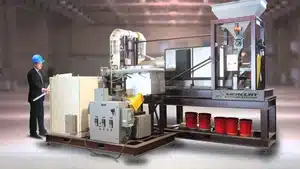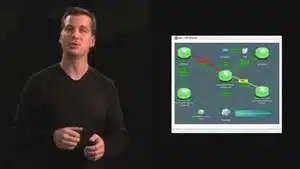Corporate Voice Over Services: Expertise Beyond AI
D.C. Douglas, a distinguished voice actor with over three decades of experience, is renowned for his
corporate voice over services. His versatile voice and professional demeanor make him an essential partner for companies aiming to elevate their brand message, training programs, and promotional materials. Throughout his prolific career, Douglas has offered his voice talents to a diverse array of corporate projects, including:
- Training Videos: His engaging and clear delivery simplifies complex concepts, making learning accessible and effective.
- E-Learning Modules: Douglas enhances educational content with his authoritative voice, facilitating better comprehension and learner engagement.
- Commercial Productions: With his dynamic voice, Douglas can captivate audiences, making every commercial memorable and impactful.
- Corporate Presentations: His polished and professional tone lends credibility and gravitas to corporate presentations, aligning perfectly with the intended corporate image.
Douglas’s approach is notably human, providing a stark contrast to the sometimes sterile outputs from
AI voice technologies. This human touch is crucial for projects requiring emotional depth and nuance, which AI currently cannot replicate authentically. In collaborating on corporate narration projects, Douglas delves deep into understanding the client’s brand voice and audience, ensuring his delivery is perfectly tailored to meet the project’s goals. His ability to adapt quickly to feedback and make necessary adjustments further distinguishes him from AI solutions, offering unmatched flexibility and responsiveness. The consistent use of Douglas’s recognizable voice across various projects can significantly strengthen a brand’s identity, cultivating familiarity and trust with audiences. This brand continuity is invaluable and often leads to higher engagement and retention of the company’s message. Areas
D.C. Douglas provides voice narration for are: Corporate Training Videos: These are used for internal training and development purposes. They help in onboarding new employees, explaining company policies, or demonstrating how to use new software or equipment. Explainer Videos: Often used on corporate websites or in marketing material, explainer videos help illustrate complex ideas or products in simple, engaging ways, making them understandable for clients and customers. Corporate Presentations: Voice overs for presentations are used during corporate meetings, seminars, or webinars to provide clear and professional narration of the content being presented. Product Demonstrations: Voice over can guide viewers through the features and benefits of a product. These are crucial for sales videos and product launches. IVR (Interactive
Voice Response): This is the automated voice that interacts with callers in the customer service phone systems, guiding them through menu options and providing information without human intervention. Public Announcements: For corporate events or within larger company premises, voice over is used for making public announcements, providing instructions, or sharing important news with employees or visitors. Company Brand Films: These are high-level productions that convey the company’s mission, vision, and values to build brand identity and corporate reputation, often shared in public domains or during large corporate events. Audiobooks for Training: In some cases, companies produce audiobooks that provide in-depth training or professional development material for their employees to listen to at their convenience. In conclusion, while AI voice technologies offer certain advantages, the unique qualities of a professional voice actor like D.C. Douglas bring unparalleled value to corporate voice over projects. His emotional range, adaptability, and deep connection with listeners ensure that every narration is not just heard but felt, making a lasting impression on the audience. — TSG Management “`html
Famous Corporate In-House Videos and Their Evolution Over the Years
Corporate in-house videos have become a cornerstone of internal and external communication for businesses. These videos serve various purposes, from training employees to showcasing company culture and promoting products. Over the years, numerous corporations have created memorable and impactful in-house videos that reflect their brand values and communication strategies. Here’s a comprehensive look at famous corporate in-house videos and the different types that have emerged throughout the years.
The Importance of In-House Videos
In-house videos are vital tools for corporations because they:
- Enhance Communication: Facilitate clear and consistent messaging across all levels of the organization.
- Improve Training: Provide effective and engaging training materials for employees.
- Strengthen Culture: Showcase company culture and values, helping to build a cohesive team.
- Promote Products: Highlight new products or services to internal teams and external stakeholders.
- Boost Engagement: Increase employee engagement and morale through creative and inspiring content.
Types of Corporate In-House Videos
1. Training Videos
Training videos are essential for onboarding new employees and providing ongoing education to existing staff. They cover a wide range of topics, from company policies to technical skills and safety procedures. Notable examples include:
IBM’s “Basic Principles of the IBM System/360” (1964)
IBM created comprehensive training videos for its employees to understand the innovative System/360 mainframe computer. These videos were instrumental in educating both IBM staff and clients on the system’s capabilities, setting a precedent for technical training materials.
Microsoft’s “How to Use Windows 95” (1995)
To help users transition to its new operating system, Microsoft produced an engaging training video featuring celebrities like Jennifer Aniston and Matthew Perry. This video combined humor with practical instructions, making it memorable and effective.
2. Corporate Culture Videos
These videos highlight a company’s values, mission, and work environment, aiming to attract potential employees and engage current ones. Famous examples include:
Google’s “The Internship” (2013)
While not an official in-house video, “The Internship” film provided a glimpse into Google’s work culture, featuring real Google employees and locations. It showcased the innovative and fun aspects of working at Google, enhancing its reputation as a desirable workplace.
Zappos’ “Company Culture Video” (2011)
Zappos is renowned for its strong company culture. Their in-house videos often feature employees discussing the core values and unique work environment that make Zappos a standout employer. These videos have been instrumental in attracting talent and maintaining high employee morale.
3. Product Launch Videos
Product launch videos are used to introduce new products or services to employees and stakeholders. They often combine technical details with marketing flair to generate excitement. Examples include:
Apple’s “1984” (1984)
Apple’s famous “1984” commercial, directed by Ridley Scott, was used internally to rally employees before its public debut during the Super Bowl. This video set a high standard for product launch announcements, emphasizing Apple’s innovative spirit and market disruption goals.
Tesla’s “Cybertruck Unveil” (2019)
Elon Musk’s presentation of the Cybertruck combined live demonstration with pre-produced video segments, highlighting the vehicle’s unique features and futuristic design. The video generated significant media coverage and public interest, exemplifying Tesla’s bold approach to product launches.
4. CEO Messages
CEO messages are used to communicate directly with employees, shareholders, and sometimes the public. These videos are often employed during times of significant change or to share important updates. Notable examples include:
Satya Nadella’s “Vision for Microsoft” (2014)
Upon becoming CEO, Satya Nadella shared his vision for Microsoft’s future through a well-produced video message. His transparent and forward-thinking approach helped to reassure employees and investors, marking a new era for the company.
Howard Schultz’s “Message to Starbucks Partners” (2008)
During the financial crisis, Starbucks CEO Howard Schultz addressed employees directly through a video message, discussing the company’s challenges and strategies. His candid and motivational style helped to maintain morale and focus during difficult times.
The Evolution of Corporate In-House Videos
Corporate in-house videos have evolved significantly over the years, driven by advancements in technology and changes in communication strategies. Early videos were often straightforward and informational, while modern productions are more dynamic and engaging, utilizing high-quality visuals, storytelling techniques, and interactive elements. Today, companies leverage various platforms to distribute in-house videos, including internal intranets, social media, and video conferencing tools. This increased accessibility ensures that messages reach a broader audience quickly and effectively.
Conclusion
From training materials to CEO messages, corporate in-house videos play a crucial role in enhancing communication, training, and engagement within organizations. Over the years, famous examples from companies like IBM, Google, and Apple have demonstrated the power of well-crafted video content. As technology continues to advance, the potential for innovative and impactful in-house videos will only grow. For more insights into the world of corporate video production, check out these authoritative sources: Explore the latest trends in corporate video production at
Forbes. Stay updated on the best practices for corporate communication at
Business Insider. Learn about the history and impact of corporate videos at
Harvard Business Review.











































 The corporate read really includes three categories; the kind of corporate narration that explains with a smile (you’re on the right playlist), the kind that implores with bi-polar excitement and the kind that thanks you for holding. (Scroll to end for that kind of sexiness…)
The corporate read really includes three categories; the kind of corporate narration that explains with a smile (you’re on the right playlist), the kind that implores with bi-polar excitement and the kind that thanks you for holding. (Scroll to end for that kind of sexiness…)

